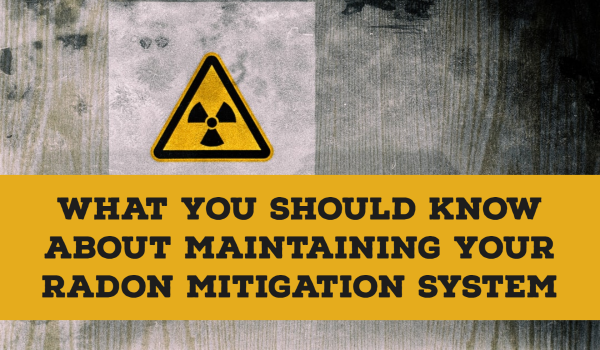Installing a Radon mitigation system is a viable way to keep your home safe. Radon is second only to smoking as a leading cause of lung cancer. Research shows that the risk of lung cancer increases by 16% for every 100 Bq/m of radioactive gas concentration.
While getting a Radon abatement system is a wise step, you’ll also need to schedule maintenance to keep it efficient. Here are some of the things that you and your local radon mitigation and abatement company can do to achieve that.
Maintain the Sub-Slab System
The pressure inside your home is lower than the pressure under the house. For that reason, a radon gas reduction system is necessary to draw the gas away from the building. Depressurization is one of the most common processes for radon mitigation.
An active sub-slab unit will utilize fans to ensure no radioactive gas will escape into your home. One of the essential maintenance tasks is checking that the fan is working. Remember, it should be running 24/7 to be effective in mitigating radon.
Check your Manometer
The manometer is a U-shaped tubing filled with fluid. It indicates whether the fan is drawing gas through the pipes. If the reading on the tube is zero, it means the depressurization process is not working.
Note that some manometers can lose the liquid through evaporation. That means you’ll not be in a position to determine if your radon mitigation system is working. However, you can always purchase or replace the gauge at a reasonable cost.
Maintain the Heat Recovery Ventilator
The HRV is a ventilation unit that complements your radon mitigation system. It facilitates the flow of air to reduce the concentration of radon in your home.
HRV units have a filtration mechanism that will need a replacement at least twice a year. If you fail to change your filter, it will clog, and it will restrict airflow. The filter is easy to change, and you can acquire it for as cheap as $10.
Check the Warning Systems
After a sump-pump installation, there ought to be a radon warning system. For the mitigation process to be effective, the system needs to be working day and night. Therefore, an alarm is necessary so that you can take action before the radioactive gas gets into your home.
The installation of the warning system should be in areas where you can access and detect the alarm. Make a point of checking your set up once or twice a month.
Perform Radon Testing
Another aspect of maintaining your system is periodic radon testing. After installation, the EPA recommends homeowners to re-test after one month. You will also have to carry out tests of your radon mitigation system every two years.
If you are planning to remodel your home, consult a Denver radon testing professional. They can assist you in developing an effective mitigation strategy. After renovations, there should be further tests to confirm that the home is safe. Ensure you get a report of the installation, as well as the warranties for the equipment.
A radon mitigation system is essential in keeping your home safe. Maintenance ensures the installation is efficient for the long term. Make a point of creating a schedule that integrates with the rest of your home’s maintenance tasks. For more information on radon testing and inspection as well as mitigation and abatement services, please call us today.


Recent Comments